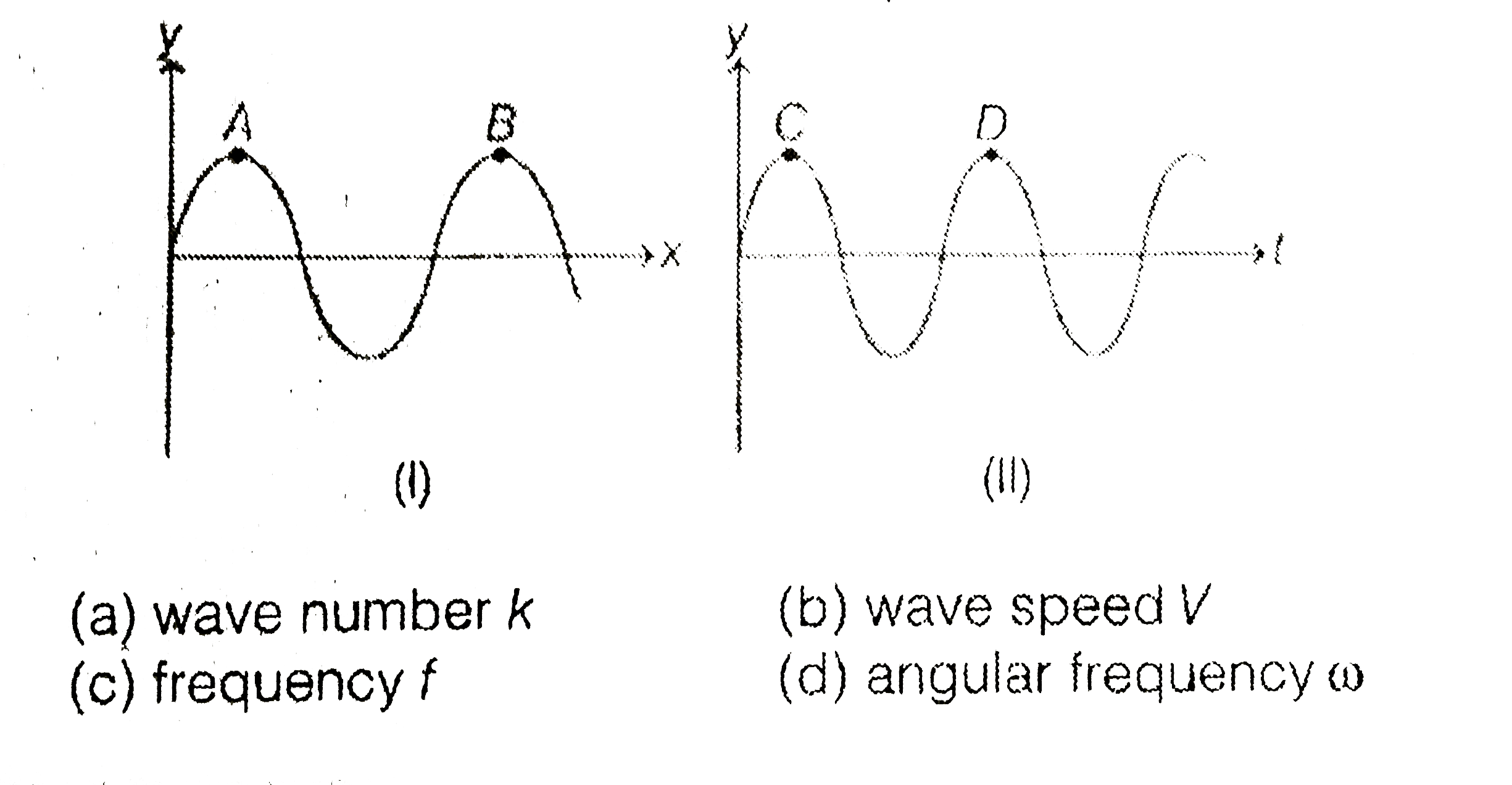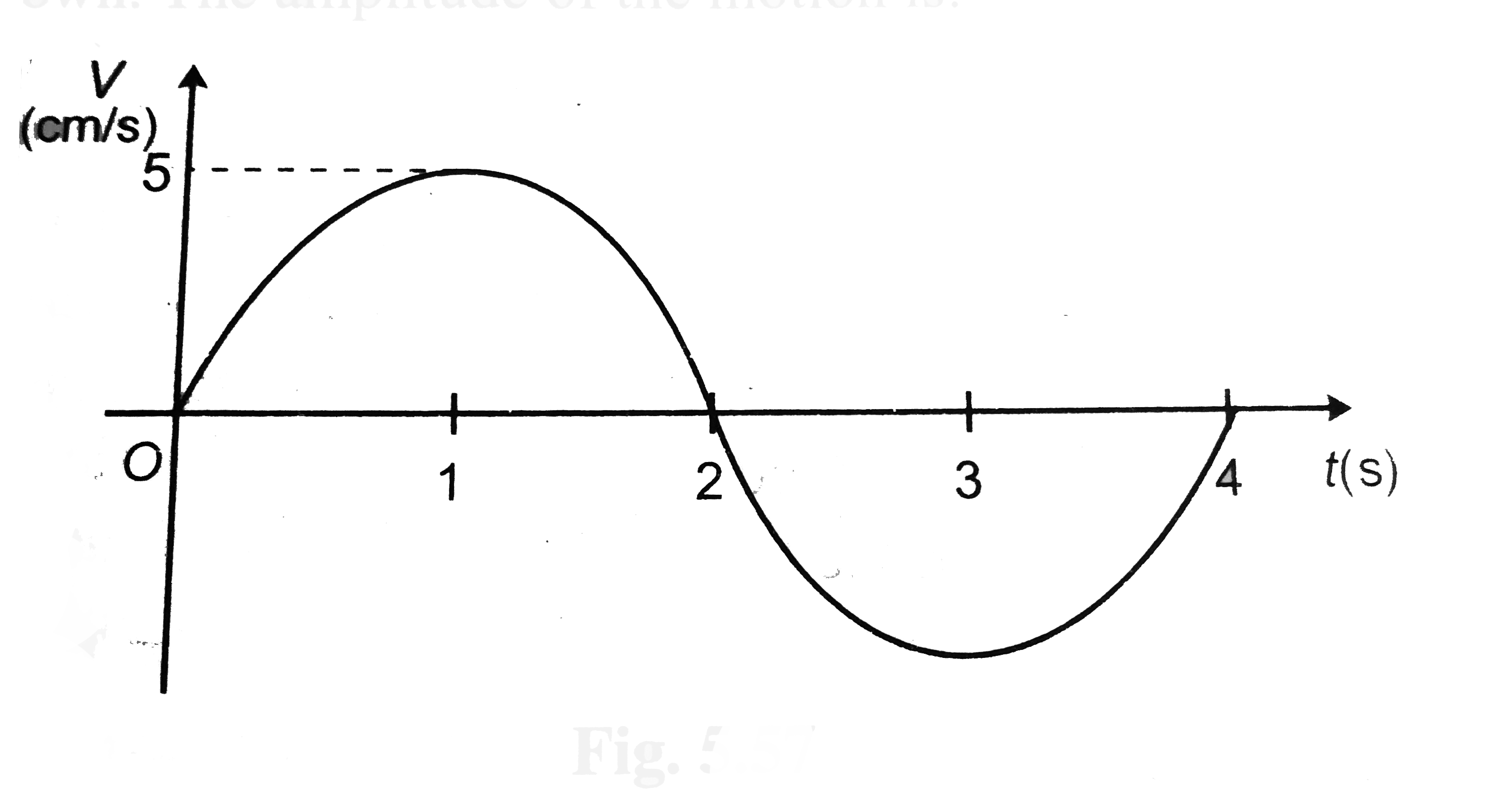An observer standing at the sea coast observes 54waves reaching the coast per minute. If the wavelength of a wave is 10m, find the wave velocity.
19m/sec
29m/sec
9m/sec
39m/sec
The correct Answer is:C
To find the wave velocity, we can follow these steps:
Step 1: Determine the frequency of the waves
The observer sees 54 waves reaching the coast per minute. To find the frequency (f) in Hertz (Hz), we need to convert minutes to seconds.
f=54 waves1 minute=54 waves60 seconds=0.9 Hz
Step 2: Use the wavelength
The wavelength (λ) of the wave is given as 10 meters.
Step 3: Calculate the wave velocity
The wave velocity (v) can be calculated using the formula:
v=f×λ
Substituting the values we have:
v=0.9 Hz×10 m=9 m/s
Final Answer
The wave velocity is 9 m/s.
---
The observer sees 54 waves reaching the coast per minute. To find the frequency (f) in Hertz (Hz), we need to convert minutes to seconds.
The wavelength (λ) of the wave is given as 10 meters.
The wave velocity (v) can be calculated using the formula:
The wave velocity is 9 m/s.
টপার এই প্রশ্নগুলো সমাধান করেছে
- WAVE ON STRING Book:RESONANCE ENGLISHChapter:WAVE ON STRING Exercise:Exercise- 2 PART I
Explore 21 Videos
- WAVE ON STRING Book:RESONANCE ENGLISHChapter:WAVE ON STRING Exercise:Exercise- 2 PART II
Explore 19 Videos
- WAVE ON STRING Book:RESONANCE ENGLISHChapter:WAVE ON STRING Exercise:Exercise- 1 PART I
Explore 23 Videos
- TRAVELLING WAVESBook:RESONANCE ENGLISHChapter:TRAVELLING WAVESExercise:Exercise- 3 PART II
Explore 7 Videos
- WAVE OPTICSBook:RESONANCE ENGLISHChapter:WAVE OPTICSExercise:Advanced Level Problems
Explore 7 Videos
সম্পর্কিত প্রশ্ন
the same progressive wave is reprsented by two group I and II. Graoup I shows how the displacement 'y' varies with the distance x along the wave at a given time. Graph II shows how y varies with time t at a given point on the wave. The ratio of measurements AB to CD, marked on the curvse m repersents.

View SolutionA certain transverse sinusoidal wave of wavelength 20 cm is moving in the positive x direction. The transverse velocity of the particle at x=0 as a function of time is shown. The amplitude of the motion is:

View SolutionConsider the wave y=(5mm)sin[1cm−1x−(60s−1)t]. Find (a) the amplitude, (b) the angular wave number, ( c ) the wavelength, (d) the frequency, (e) the time period and (f) the wave velocity.
View SolutionA string is stretched betweeb fixed points separated by 75.0cm. It observed to have resonant frequencies of 420Hz and 315Hz. There are no other resonant frequencies between these two. The lowest resonant frequency for this strings is
View SolutionTwo parallel beams of light P and Q are incident normally on a prism and the transmitted rays are brought to focus with the help of a convergent lens as shown in Fig. 2.23. If the intensities of the upper and lower beams immediately after transmission from face AC are 4I and I, respectively, find the resultant intensity at the focus.
View SolutionAn observer standing at the sea coast observes 54 waves reaching the coast per minute. If the wavelength of a wave is 10 m , find the wave velocity.
View SolutionAn observer standing at the sea coast observes 54 waves reaching the coast per minute. If the wavelength of a wave is 10 m , its speed is :
View SolutionWhat will be the wave velocity, if the radar gives 54 waves per min and wavelength of the given wave is 10 m
View Solutionएक दर्शक समुद्र के किनारे खड़ा होकर देखता है की 1 मिनट में 54 तरंगे किनारे तक पहुँचती है। यदि तरंगो की तरंगदैर्घ्य 10 मीटर हो, तो उनका निकालिये । दर्शक ने किस प्रकार की तरंगे देखी है?
View Solutionएक प्रेक्षक समुद्र के किनारे खड़ा होकर देखता है कि 1 मिनट में 54 तरंगे किनारे तक पहुँच रही हैं। यदि तरंगों की तरंगदैर्ध्य 10 मीटर हो तो उनका वेग मी/से में ज्ञात कीजिये।
View Solutionसमुद्र के किनारे खड़ा हुआ एक व्यक्ति प्रति मिनट 54 तरंगे प्रेक्षित करता है। यदि जल तरंग की अनुदैर्घ्य 10 m है। तब जल तरंग की चाल होगी
View Solutionएक रडार 54 तरंगे प्रति मिनट उतसर्जित करता है तथा इन तरंगो की तरंग दैर्घ्य 10 m है। तो तरंगो क वेग होगा
View SolutionAn observer standing near the sea-coast counts 48 waves per min. If the wavelength of the wave is 10 m, the velocity of the waves will be
View SolutionAn observer standing at the sea-coast, observes 48 waves reaching the coast per minute. If the wavelength of each wave is 10 m, then the velocity of the wave is
View SolutionAn observer standing at the sea coast observes 54 waves reaching the coast every minute. If the wave number is 10/metre, the wave velocity is
View Solution
